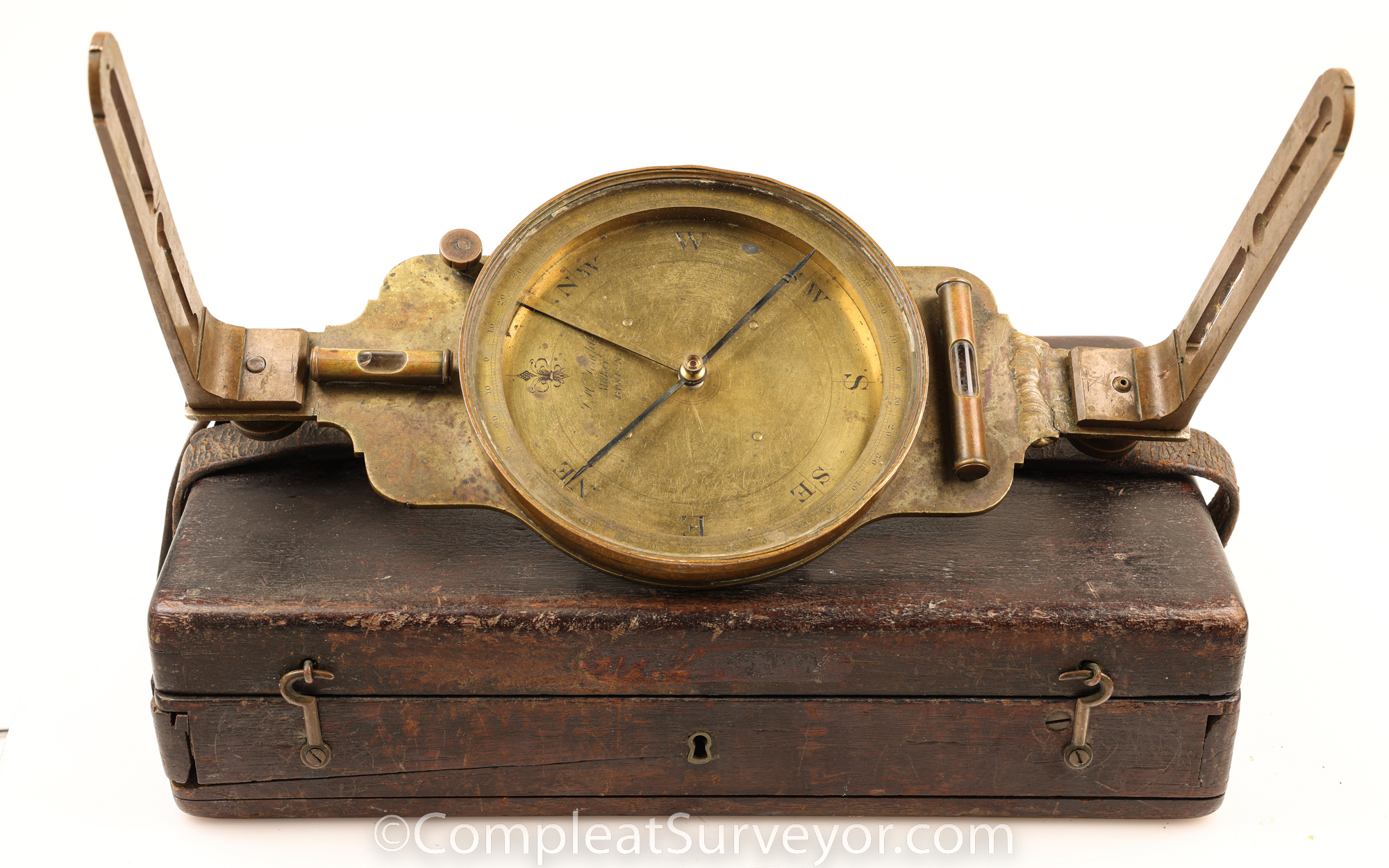
Fascinating Surveyors Variation Compass Made by Temple
I love this compass.
At first glance, this compass looks like a standard 1830s to 1850s Plain Compass with an OMG! repair job by a guy named Bubba. I've never seen a compass with a repair job like this one.
But this compass becomes FAR MORE INTERESTING when you look closely at the face and then flip the compass over to check out the underside. OH MY!
Take a look at the first pic below. When I first saw the underside of the compass I thought "What The…" I've never seen a compass with screws and slots like that.
Now take a look at the next two pictures. Yep - you can rotate the compass ring about 10.5 or 11 degrees to the East!
The maker of this compass, John H Temple, didn't make many instruments, perhaps 100 to 200, but he was considered to be one of the best makers of his era. Without having seen a dividing engine before, he constructed one that was capable of dividing to 15 seconds of a degree around the time of the civil war. That was way ahead of what the major makers could do. Buff & Berger said that "Mr Temple was, without question, the finest workman in his department in the country…"
The compass offered here is a vernier compass - a compass that can be offset for magnetic variation. But it doesn't actually have a vernier scale! So the name vernier compass doesn't really fit. So I'm calling it a Variation Compass - a compass that can be offset for magnetic variation without the use of a vernier scale.
I suspect Temple set the maximum rotation at 10 or 11 degrees because the declination in Boston in 1850 or so was 10 degrees.
I also have changed my view of the Bubba fix to broken south arm of the compass. When I pulled out the sight vanes from the box, I was disappointed but not surprised to see one of the sight vanes was slightly bent at the base. The real surprised was when I put the bent sight vane on the repaired South arm and then looked at the compass from the side. Both sight vanes were vertical, including the bent one. The repairer evidently bent the vane so that it would almost perfectly offset the damage done to the South arm. Wow.
Another thing I enjoy about this compass - it has a known owner "Horace May". I dug up some info about Horace and attached a few pages of his bio below. Horace worked as a civil engineer in Boston in the early 1850s (until 1856), so the dots connect with this Boston made compass.
The more time I spent with this compass the more I liked it. This compass has loads of personality - including an unbelievable repair job, a novel approach to adjusting for magnetic variation, a known owner, and a famous maker. This is definitely a one of a kind compass that would be additive to any instrument collection.
The compass is 12.75 inches long with a 4.5 inch needle. The needle lifter works, and the level vials hold liquid. I don't know if the staff adapter hold-down thumbscrew is original. And the sight vane thumbscrews differ slightly.
You can read more about John H Temple and see some other examples of his work at my John H Temple Makers Webpage.
I sold a really neat small Temple Compass a few years ago.
$1350 (Postpaid) - Email Russ
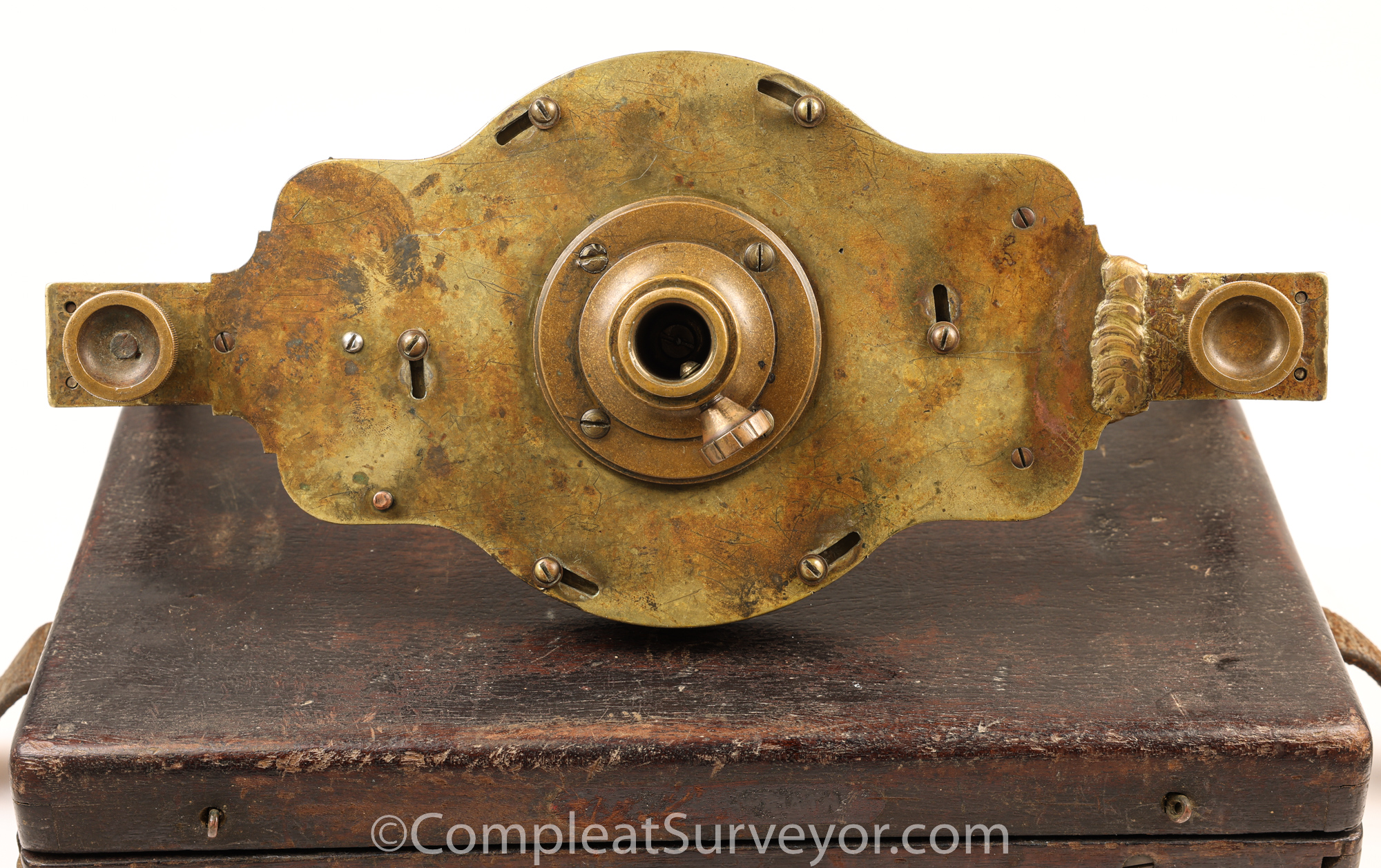
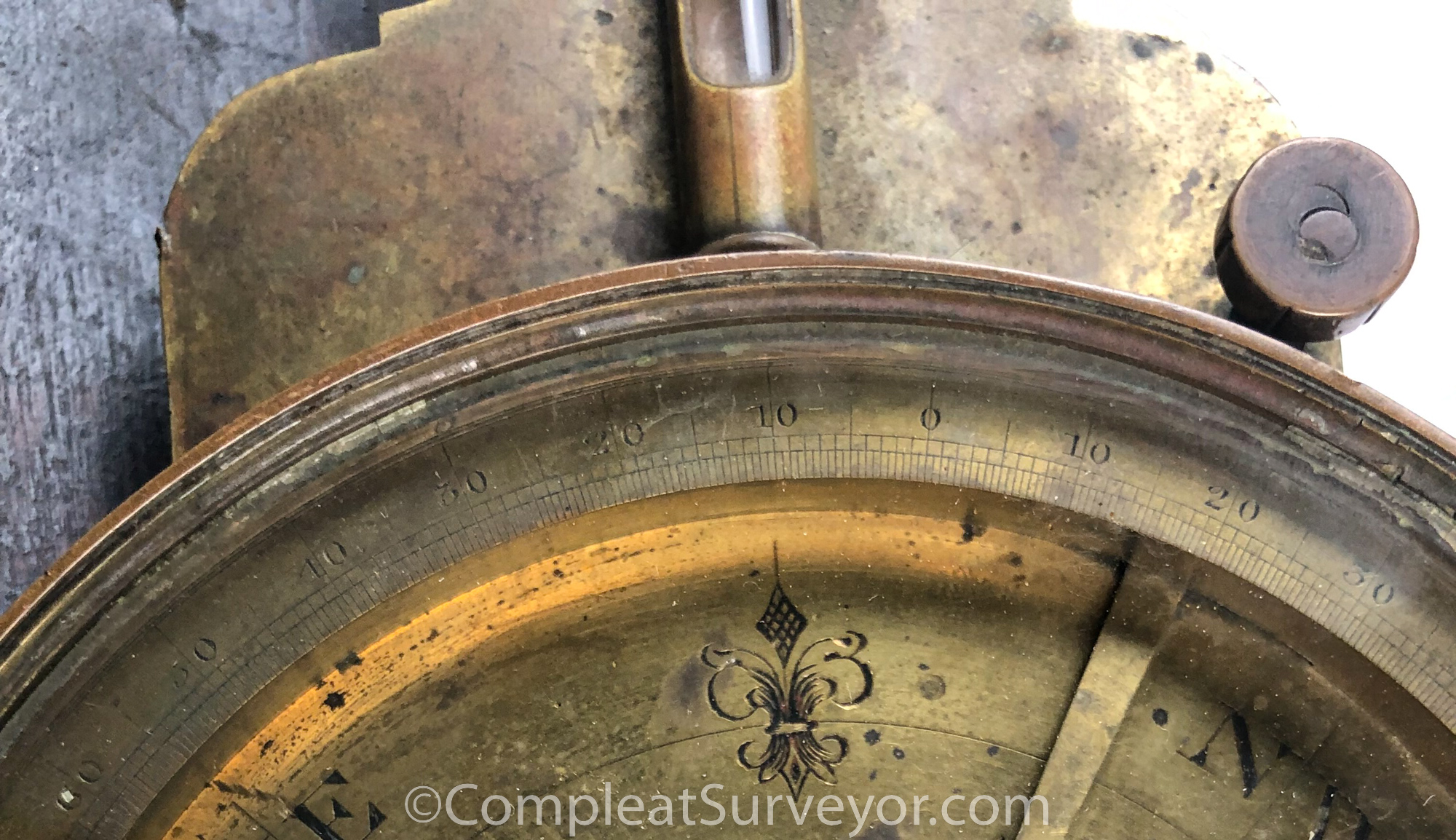
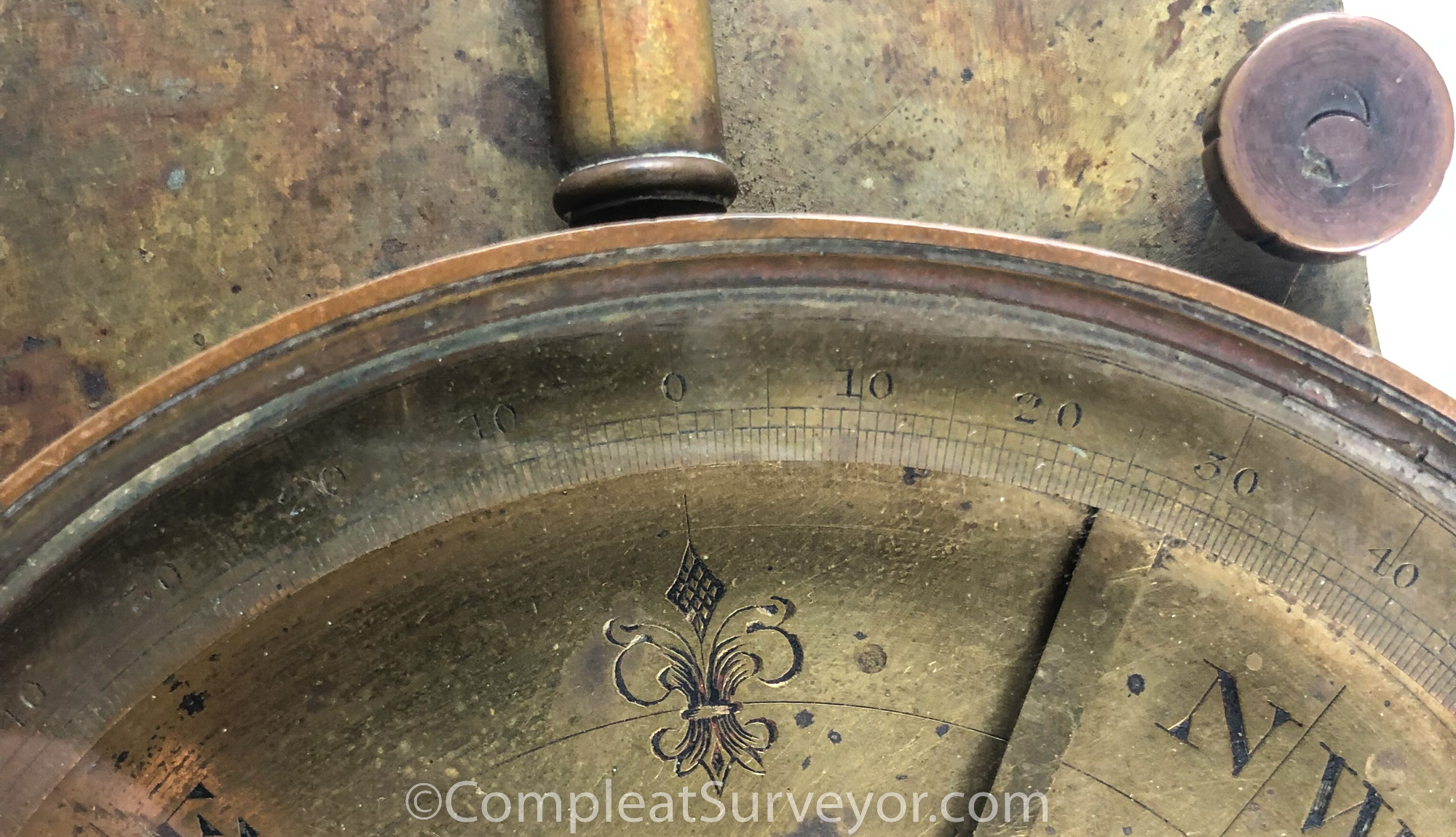
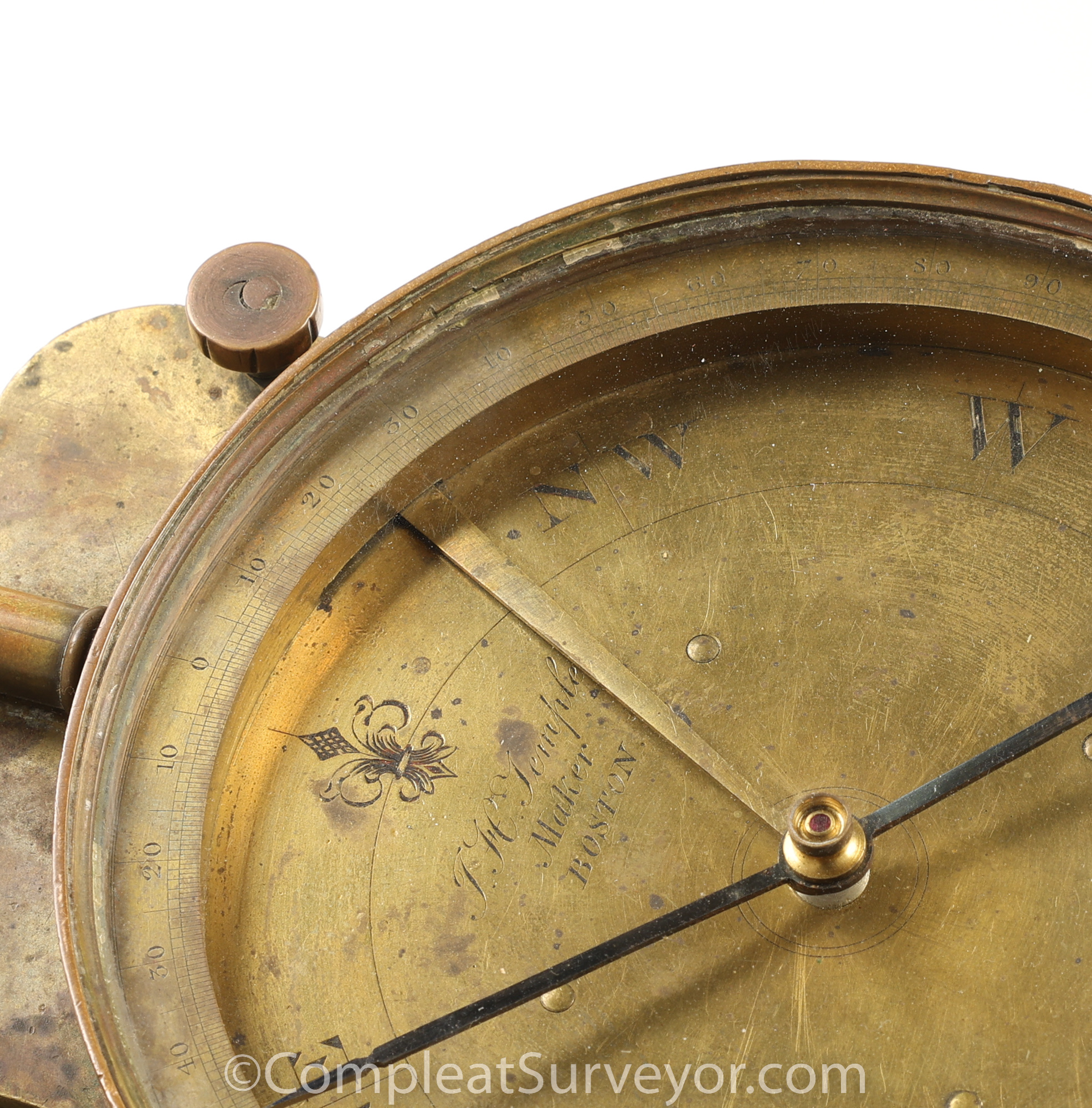
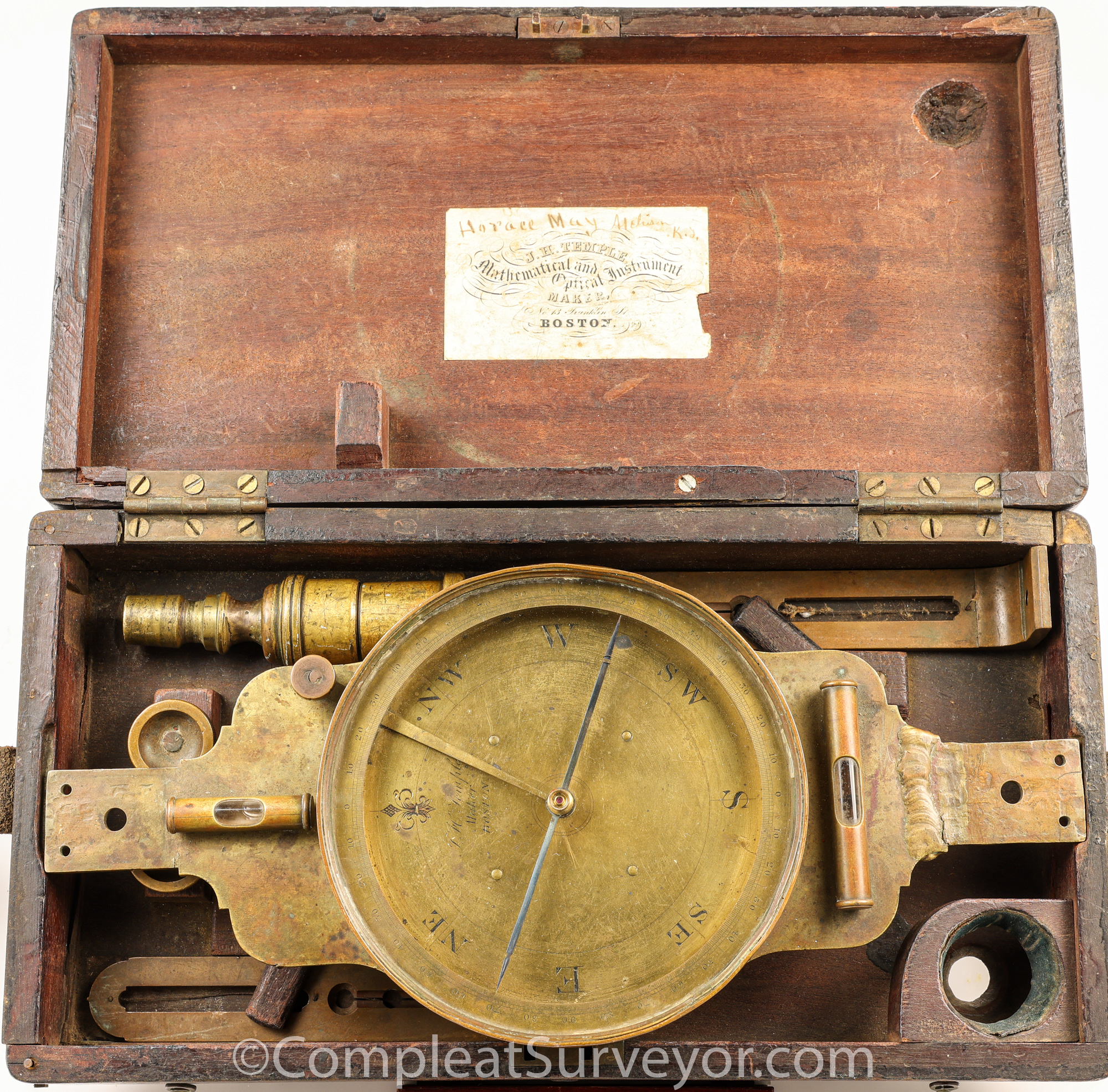
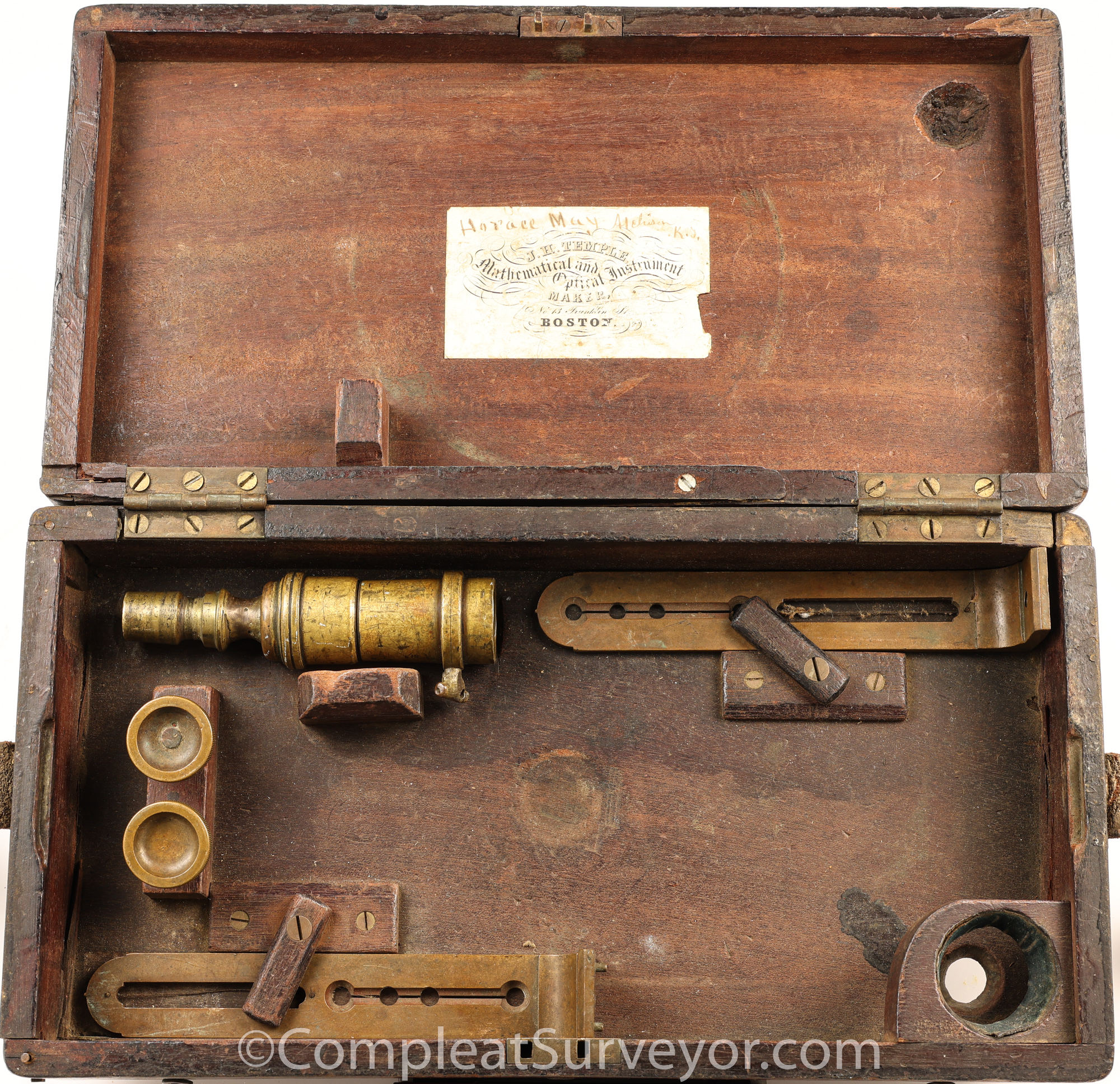
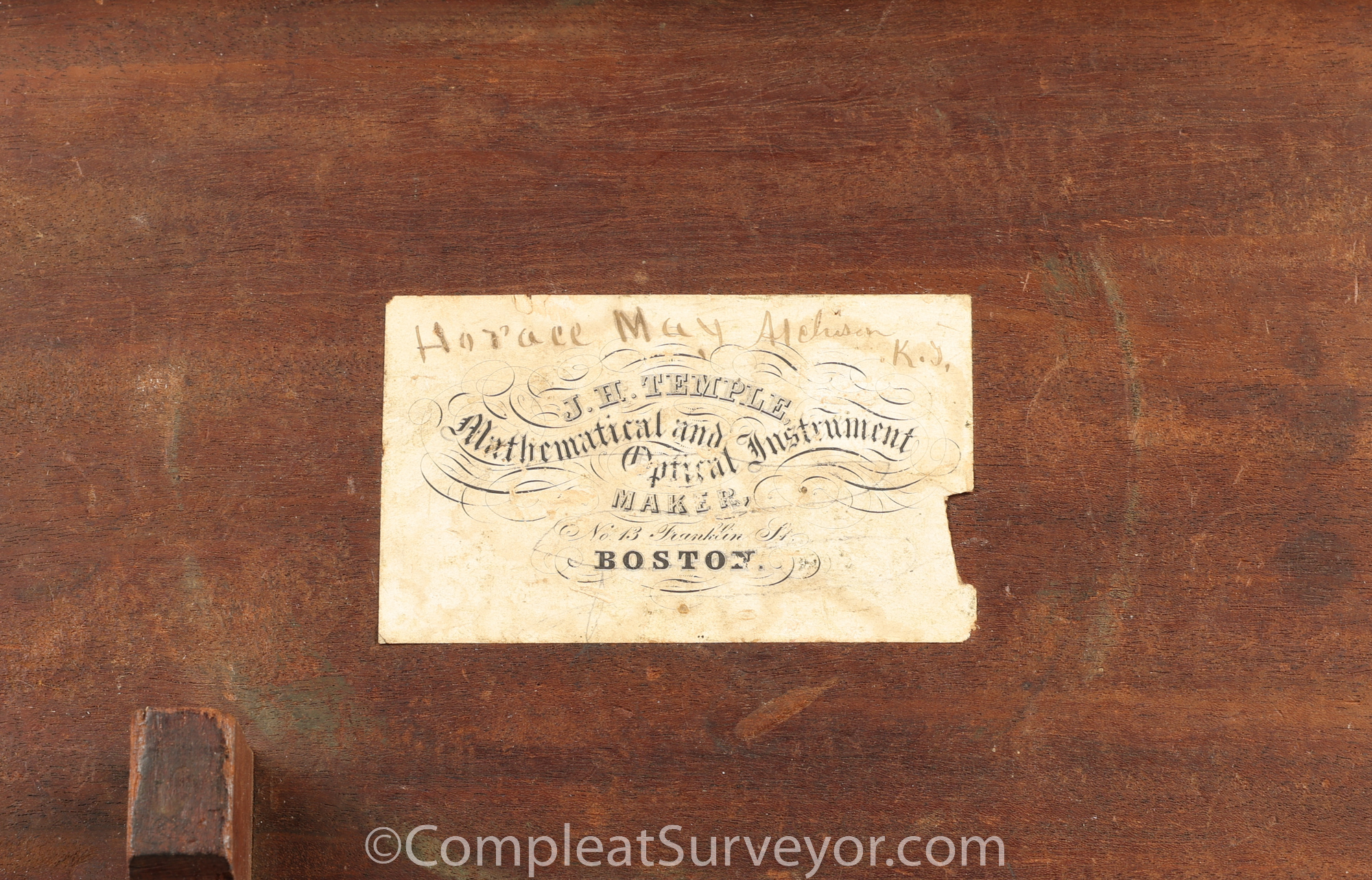
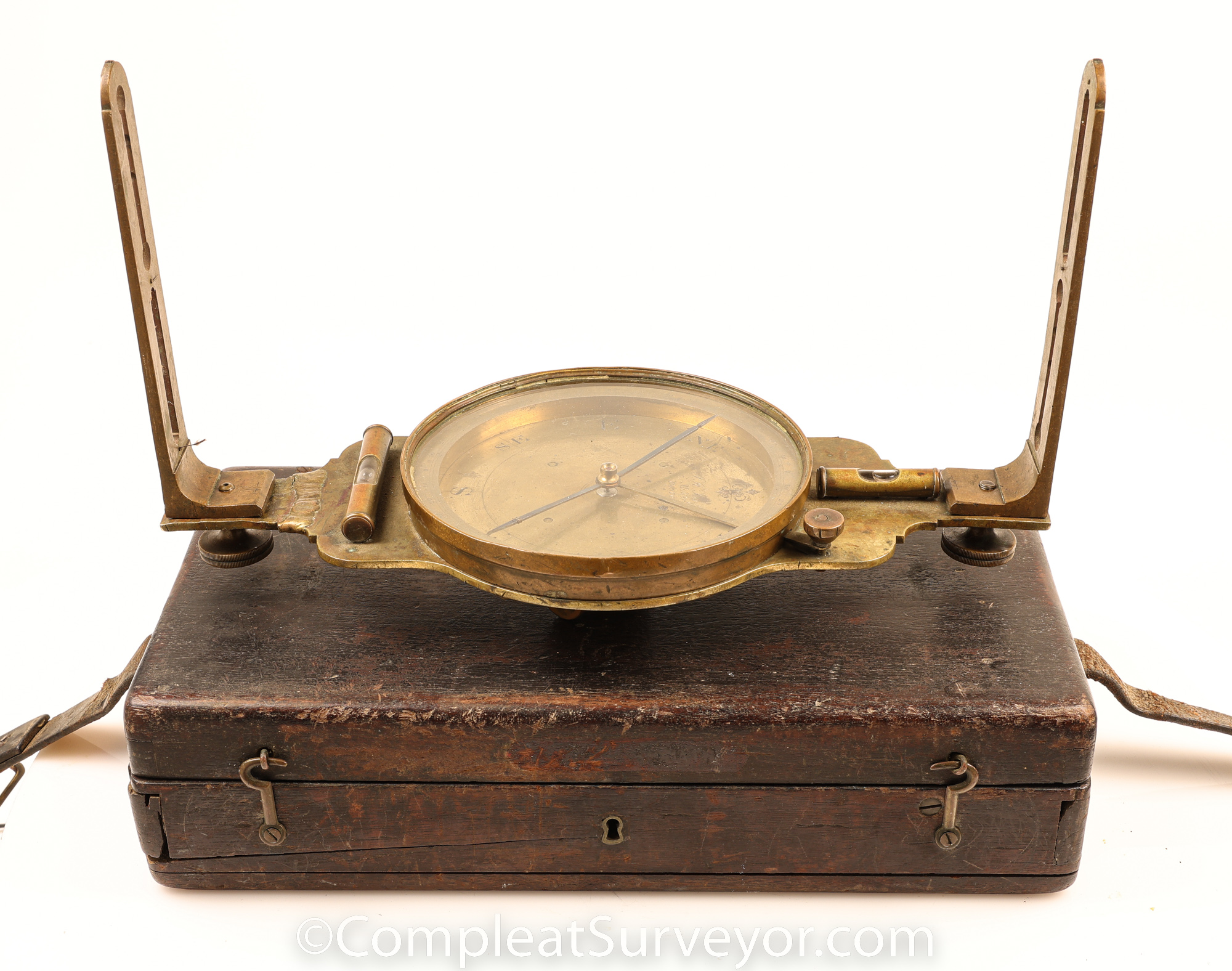
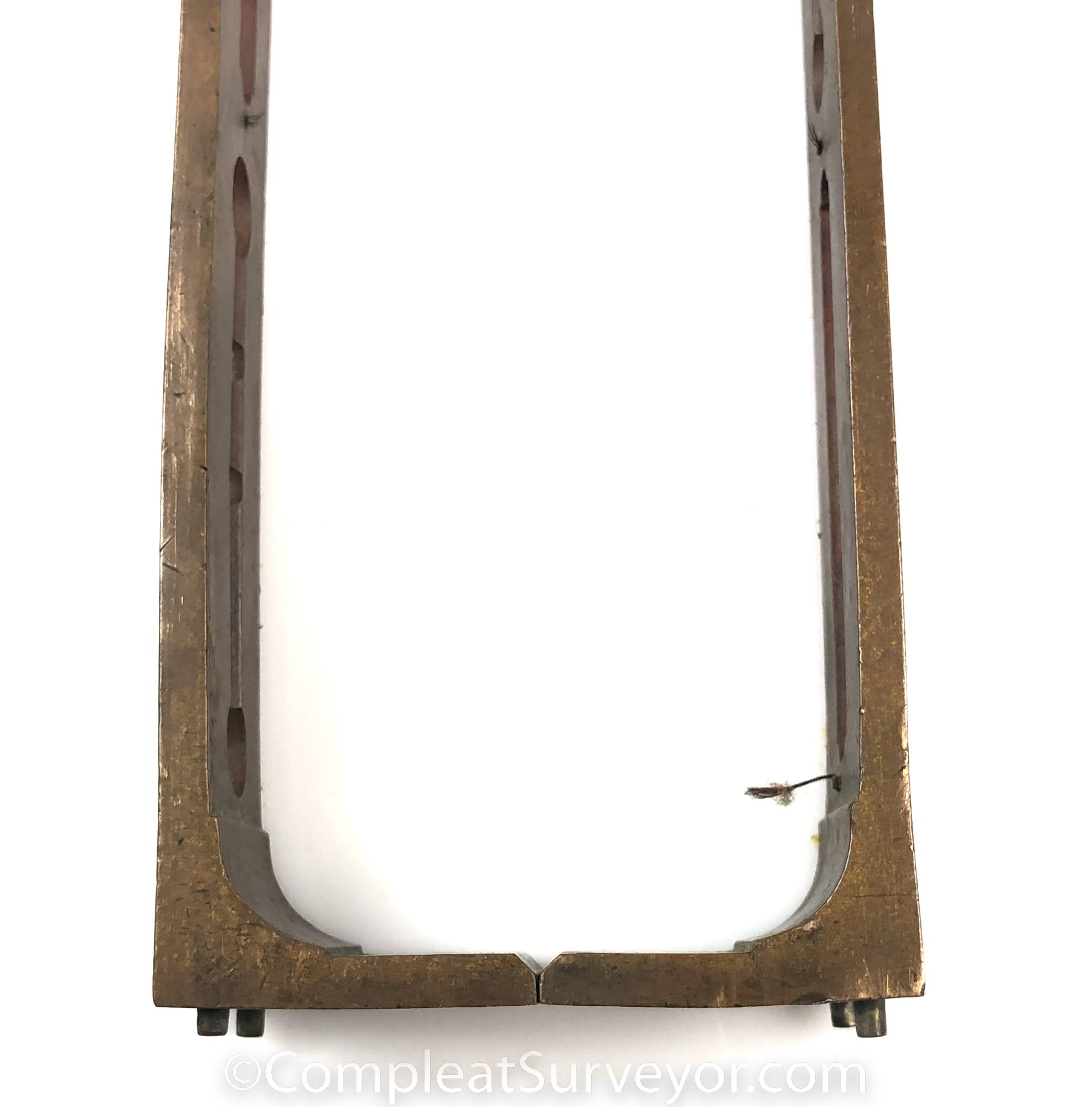
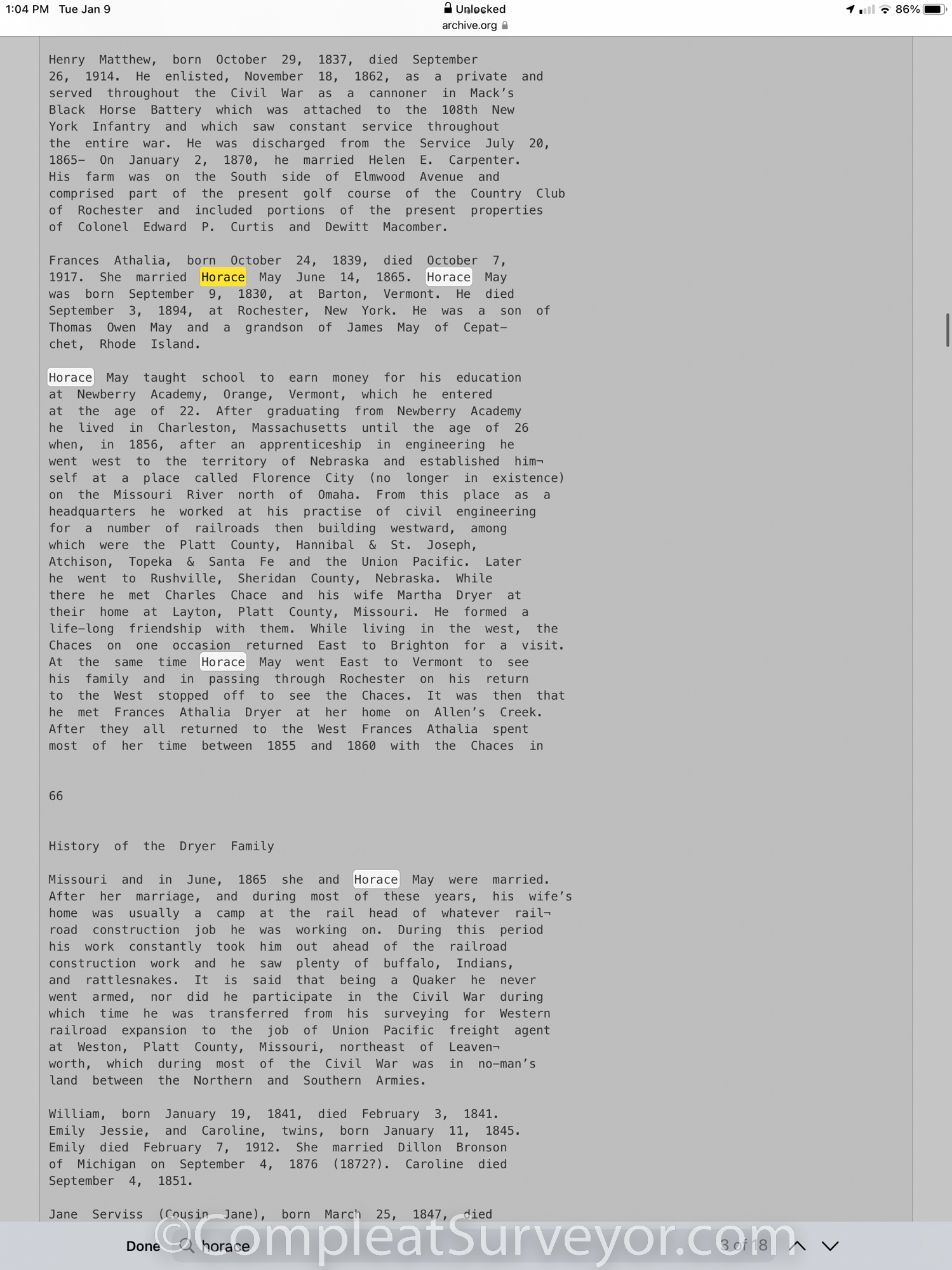
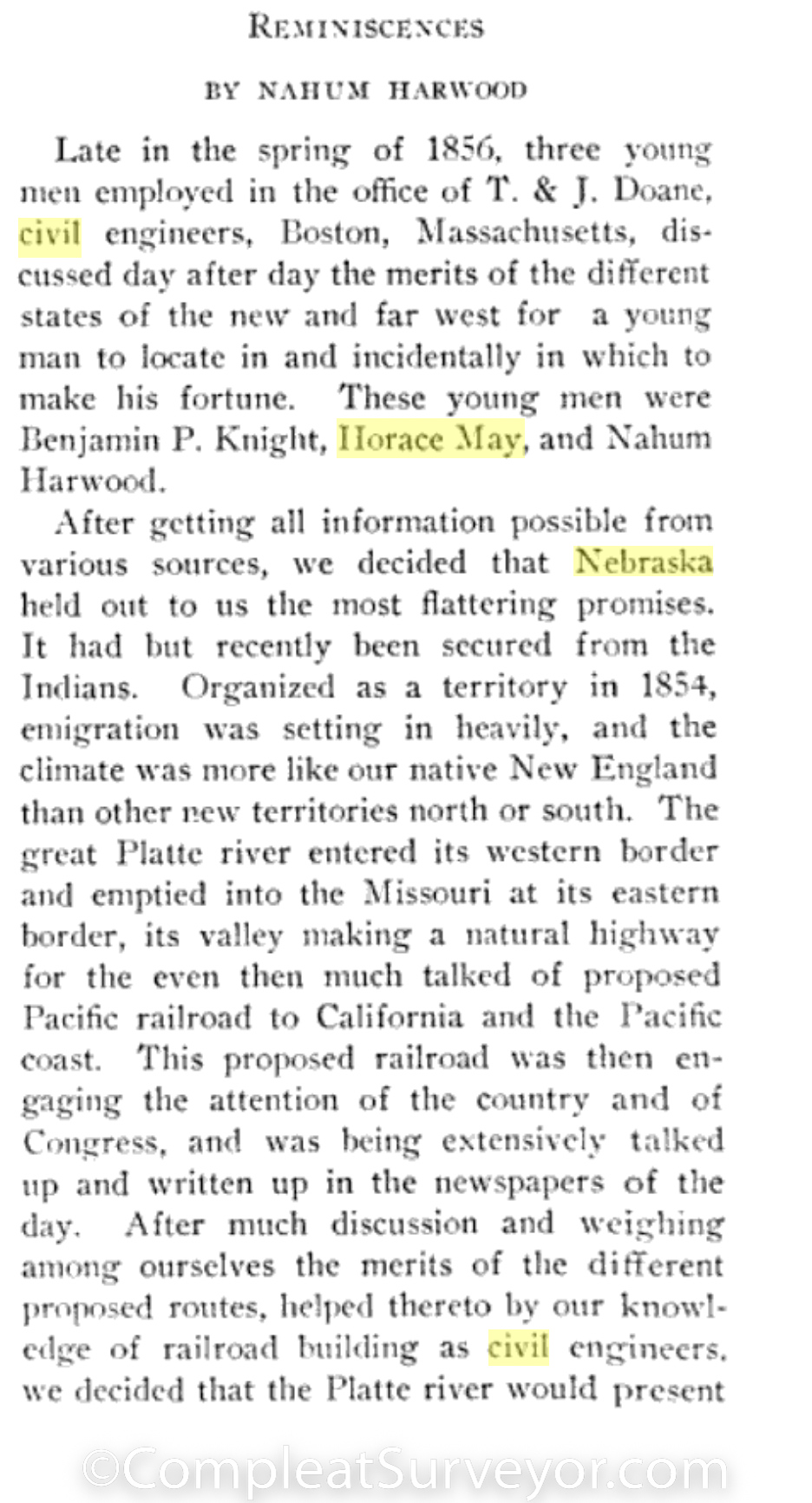
© 2020 Russ Uzes/Contact Me